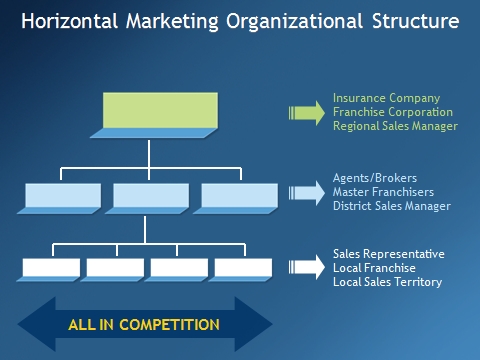
The Wikipedia definition of a horizontal market is one that “meets a common need of a wide range of industries. In contrast, a vertical market meets several needs within a single industry.” Usually, the good or service produced by a company having a horizontal market focus enjoys wide applicability and a good demand. Thus, the risk of fluctuating demand is typically minimum, but the risk of competition within the industry is rather high.
Generic bookkeeping applications, word processors, spreadsheets and computer security software are some of the examples of a horizontal market software–as there are generally no industry-specific customizations, while the scope of applicability is not limited to a single market or just a few markets.
In fact, at PromptCloud we operate on a similar model where we crawl web data in a systematic manner (standardized offering) and deliver it to clients across varied industries such as e-commerce, travel, market research, real estate, finance and so on.
Advantages of Having a Horizontal Market Focus
1. Cost Reduction
Having standardized offerings allows companies to operate at a large scale. The operational processes are linearly scalable, and this translates into a lower cost of production per unit. Apart from the production scale advantage, standardized products also enjoy the benefit of being automated easily, which in turn results in further cost savings.
2. Quality Improvement
Since a company has a standardized offering specializes in a single product or service, quality optimization techniques and R&D is concentrated on that particular offering. It’s also easier for the company to identify areas of improvement and continuously improve the product quality.
As the product or service gets to the maturity stage, it has incorporated feedback from multiple channels from across all domains–in turn becoming a product that has wider applicability as it integrates well with the businesses that it caters to. The feedback loop thus created, as users see their suggestions getting incorporated, in turn, increases customer loyalty.
3. Optimized Operations
A standardized product usually implies that the complexities in operation are minimized. There’s typically no or little customization to suit the needs of different market segments, which results in cost-effective operations. Ford’s T-model, which used an assembly line to make automobiles affordable for the common middle-class American, is the most appropriate example of how standardized products reduce production times and cost. Though there are quite a few exceptions, especially in case of service-based horizontal companies – where they might need to customize their offering to suit the varying needs of their customers across industries.
4. Specialized Manpower
As the product or service is standardized, the whole organization has recurring responsibilities and they become experts in their own domain. Right from procurement to production processes, sales and delivery; every stage is a repetitive process–making the whole operation easily scalable.
A specialized workforce also leaves more scope for innovation and generally results in higher productivity levels. Though higher levels of specialization increase the employee risk, as over-dependence on some key employees affects the business operations when they’re not able to work due to illness or unable to deliver at times of crucial business periods. Employee turnover is another important concern as training new.
5. Low Demand – Side Risks
The risk of fluctuating demand is lowest as customers belong to diverse industries and the business is relatively immune to changes occurring inside a particular industry vertical. As there’s no dependence on a handful of customers belonging to a particular vertical, forces affecting them usually don’t have much impact on the horizontally focused company.
This doesn’t mean that the company does not face any business risks. In order to keep creating value and keeping the business relevant to its customers, it may be important to keep up with technological advancements.
6. Low Bargaining Power of Customers
As the company caters to a wide customer base, they typically enjoy higher levels of price control. Besides, the average spending of each customer is lower when compared to that of a vertical model, hence the customers can’t affect the pricing decisions of the company to a large extent. Added customizations to suit specific needs also increase the input costs, and that leads to higher prices being charged.
At PromptCloud since costs incurred increase with volumes, there’s an unpredictable cost component attached which can only be estimated before starting the crawls.
7. Price Discrimination
The company can discriminate while charging its clients coming from various industries. It has the freedom to choose between either a cost-plus markup pricing or value-based pricing. In the latter case, they can charge customers on the basis of the kind of value that the company is generating for the client, and how much value is getting added on the client’s end before passing on the product to the end-user. This ability to charge a premium from a subset of its customer base gives them higher profit margins. A vertical market focus company, on the other hand, is usually too dependent on a single customer, and hence their bargaining power is not sufficient to demand a value-based price.
Disadvantages of Having a Horizontal Market Focus
1. Higher Risk of External Forces
A lack of product diversification is akin to putting all eggs in one basket (product/service). Any regulatory changes affecting that offering will also have an impact on the company’s future. Besides, any technological changes that restrict the application of the offering in the target verticals are a potential threat to its top line. Basically, the success or failure of a single product can determine the fate of the entire company.
2. Higher CAC
Because marketing efforts are not targeted to just a single industry, awareness needs to be spread across a wider audience. Hence, the average cost for the acquisition of each customer is significantly higher. In contrast, a vertical-specific offering becomes more popular within the target industry and growth efforts are accelerated by word of mouth. The target audience is also generally limited to a handful of companies.
3. Customer Loyalty
A vertical market-focused company, by virtue of this model, usually has deeper synergies with their customers and hence customer churn is minimal, as changing client/supplier affects both parties immensely. Even if a perfect substitute is readily available, the time and resources lost in the transition can be prohibitive.
4. Low Cross-Sell
As the company has standardized offerings, there are usually very limited opportunities for cross-selling to the existing customer base.
5. High Internal Competition and Low Barriers to Entry
Between two companies having a horizontal market focus, product differentiation is usually very low–which usually leads to commoditization of the product in the long run as the competition swells. Companies having a horizontal market focus face significant threats from new entrants–both from vertically focused companies across industries, as well as new horizontally focused entrants quoting much lower prices for almost the same offering.
For example, a company making cash registers for small and medium-sized businesses not only competes with other cash register companies but also with specialized Point of Sale companies–such as those catering only to restaurants or food trucks.
Although horizontal offerings have wider applicability and enjoy the benefits of specialization, building and growing such a company is a major challenge – owing to the high promotion costs and the need for building a prominent technological advantage over existing players. On the other hand, picking up one vertical and then moving on to the others has also proven to be a successful business model.
Amazon, which started by selling books and has now become a full-fledged e-retailer, is a case in point. Rather than figuring out which model to go for, it makes sense to focus on solving a genuine customer problem.






















